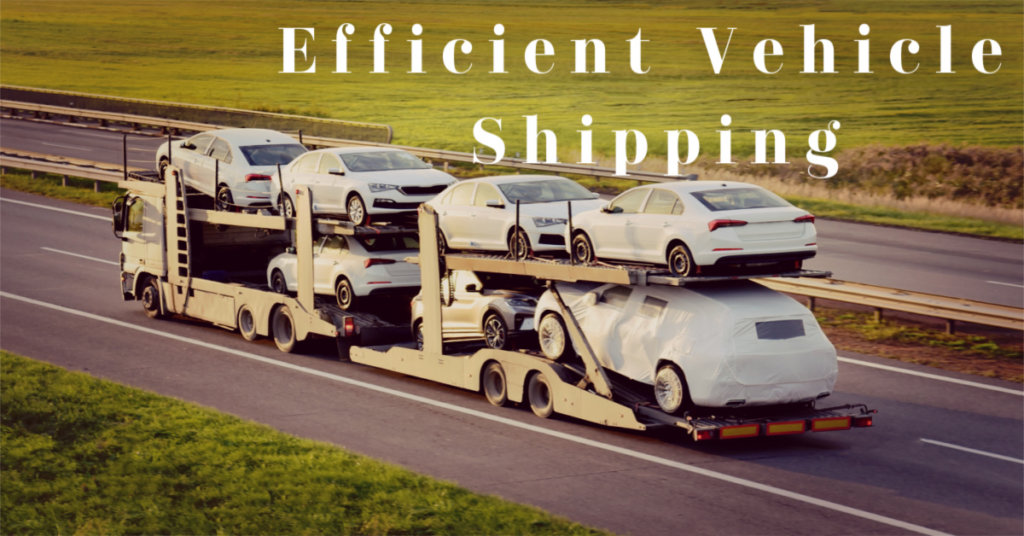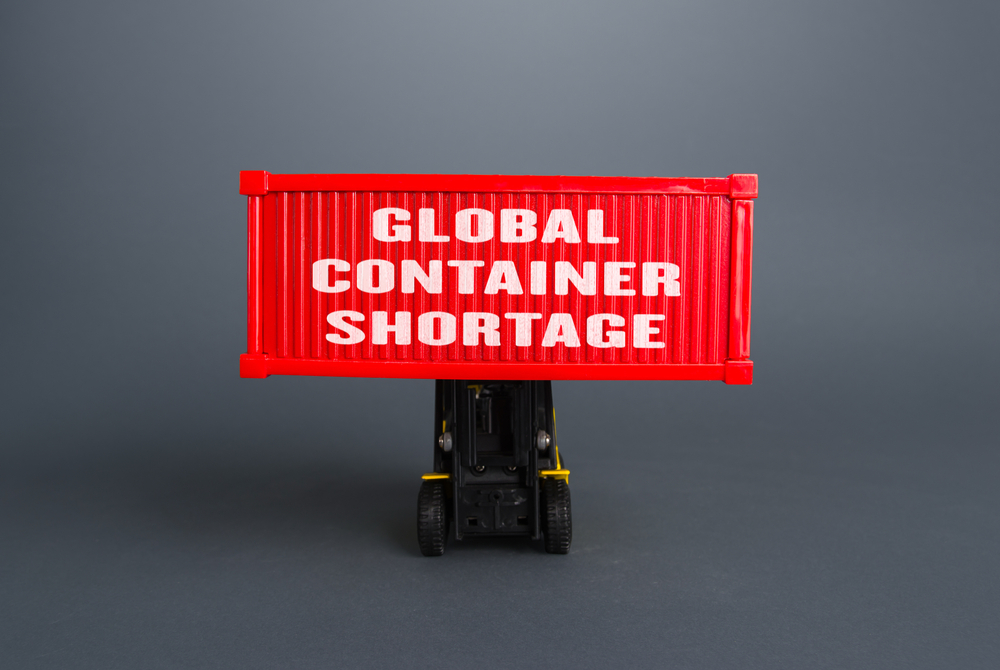
Reading Time: 8 minutes
Dealership managers and logistic coordinators will find strategic value in understanding efficient vehicle shipping. This article provides key insights into refining the restocking process, ensuring your inventory moves as swiftly as the cars on the showroom floor.
I love cars, don’t you? The hum of a well-tuned engine, the satisfaction you feel cruising down the open road, the freedom of destinations unknown. But as a consumer, even I often overlook what it takes to get that shiny new ride into the dealership. Restocking vehicle inventory requires a complex dance of shipping logistics, with various challenges that must be overcome.

Discover more about efficient car shipping and its impact on your business in our detailed guide: Explore Efficient Car Shipping Strategies. Dive into the world of vehicle logistics and learn how to optimize your operations!
Efficient Vehicle Shipping | Your Comprehensive Guide
For those in the automotive industry and logistics sector, this comprehensive guide is a must-read to streamline your operations.
- Optimizing Vehicle Shipping: Unpack the challenges and solutions in efficient vehicle shipping for dealership inventory restocking.
- Inventory Management: Learn strategies to balance your inventory-to-sales ratios and enhance stock replenishment.
- Efficient Restocking: Discover the significance of efficient inventory restocking for customer satisfaction and business growth.
- Global Automotive Logistics: Gain insights into the expansive role of air cargo markets in the automotive industry worldwide.
Get set for an enlightening ride through the intricacies of efficient vehicle shipping that are as crucial as they are complex. This is your roadmap to mastering efficient vehicle shipping and inventory management.
The Environmental Protection Agency offers insights on reducing emissions with efficient vehicle transport. Learn more at epa.gov.
Challenges in Efficient Vehicle Shipping Inventory Restocking
Stocking up your warehouse without burning a hole in your pocket is a challenging task, more so, now than ever. The bloated inventories at U.S. general merchandise stores saw a recent 1.2% expansion in March, proving a slow but steady growth. But, behind this growth are warehouse problems that many retailers face today, key among them being Excess Inventory in Warehouses, De-risking Inventory, Shipping Container Shortage, Increased Shipping Costs, and Late Shipment of Orders. 📦✈️
Fact of the matter is, as much as 20% of the stuff currently occupying your warehouse space isn’t seasonal stock. It’s just inventory that’s been sitting there for far too long. This isn’t just a waste of space, but also tied-up capital that could’ve been used elsewhere. Not to mention the risk of goods becoming obsolete over time. Minimising excess inventory is one of the core strategies to increase profitability.
Excess Inventory in Warehouses

De-risking Inventory
To increase risk resilience in supply chains, many retail shippers are trying to ‘de-risk’ their inventory. This means taking steps to streamline and optimize distribution networks, investing in technology to gain real-time visibility in inventory, and enhancing partnerships with suppliers. De-risking is now a key to Efficient Inventory Management.
Keep your ride in prime condition during the off-season with our expert storage tips. Visit “Seasonal Vehicle Storage Solutions” for smart insights and secure your peace of mind! 🚗✨
Shipping Container Shortage

A global shipping container shortage – sounds odd, doesn’t it? – but it’s true! This shortage isn’t just slowing down the shipping process but has also led to a 30% increase in shipping costs. For businesses on a tight budget, this rise poses a significant challenge. How do you keep your inventory topped up without toppling your profits?
Increased Shipping Costs
Unfortunately, the shipping container shortage isn’t the only thing pushing up the shipping cost. Fuel surcharges, import/export limitations and, let’s not forget, the pandemic impact, have all contributed to a rise in overall shipping expenses. An unfortunate reality for retailers across the world.
Ensure your vehicle is protected by understanding insurance options from the Insurance Information Institute at iii.org.
Late Shipment of Orders
Do you promise your customers a delivery date, only to miss it due to out-of-stock situations? You’re not alone. A recent report highlights that 34% of businesses have shipped orders late because they’ve sold products that aren’t in stock. Not only does this tarnish your brand image, but it also dents your customer loyalty. A strong inventory management strategy is needed to tackle this.
Following a robust inventory restocking strategy that balances cost, risk, and speed is crucial. The challenges in inventory management are many – but so are the solutions. Stay tuned for our next section where we’ll explore these solutions in-depth. Until then, reevaluate and rethink your inventory policies – your bottom line will thank you for it!
Strategies for Efficient Vehicle Shipping
A cool, sunny afternoon, a cargo trailer full of vehicles, and the open road – as each car rolls off the ramp, the sense of accomplishment is profound. But what if I told you that’s only half the story? The other half involves a considerable amount of planning and implementing strategies for efficient vehicle shipping.
It’s like playing chess; anticipating each player’s (or in this case, the vehicle’s) move and strategizing accordingly. The planning covers aspects like optimizing the inventory-to-sales ratio, managing inbound retail containers, and improving stock replenishment. On this page, we’ll dive deeper into each of these strategies. So buckle up, we’re going for a ride 🚗.

Optimizing Inventory-to-Sales Ratio
When it comes to the inventory-to-sales ratio, it’s all about seeking that delicate balance. You need to have enough vehicles to meet demand but not so many that you’re drowning in inventory. Too much inventory means higher storage cost, and too little can lead to stockouts and unhappy customers. Remember, as of November, the inventory-to-sales ratio was 1.09. That’s your benchmark 👈.
So, how can you optimize this balance? The answer lies in streamlining your order fulfillment process, improving demand forecast, and leveraging technology to monitor your inventory levels in real time. This way, you stay ahead of the curve and meet the demands swiftly and efficiently.
Managing Inbound Retail Containers
The influx of inbound retail containers has seen an increase lately- it shot up by a whopping 35.6% year-over-year! Navigate this by adopting an integrated approach. Combining data from different sources like traffic management systems, port procurement data, and scheduling software can help streamline processes, reduce dwell time, and improve turnaround times.
Think of it this way: if your inbound retail containers are consistently managed well, you can adjust your processes according to fluctuations in demand or delays. Regular tracking can help reduce bottlenecks and enable smoother operations. Efficient management doesn’t just mean streamlined operations, it also means happy customers! 🚛
Improving Stock Replenishment

The lack of proper stock replenishment can lead to an industry nightmare: stockouts. Surprisingly, a massive 70-90% of stockouts are caused by poor stock replenishment. Getting this aspect of vehicle shipping right can seem a bit daunting. But there’s a flawed beauty in the chaos. Here’s how you can master it:
Plan meticulously, anticipate demand trends, and always have a contingency plan in place to handle unforeseen circumstances. In addition, employing automated stock replenishment systems can greatly minimize the risk of stockouts.
Now that you’ve got these strategies under your belt, it’s time to take your vehicle shipping game to the next level. 🏆 Be sure to dive into our comprehensive guide on Reliable Vehicle Transportation to learn more about the best practices in the industry. It’s time to streamline and optimize. And remember, efficiency is a game where everyone wins! Welcome to the winners’ circle 🎉.
For the latest guidelines on vehicle shipping, visit the Federal Motor Carrier Safety Administration at fmcsa.dot.gov.
Historical Perspective | Role of Air Cargo Markets
The Dawn of Air Freight | An Evolution in Shipping
There’s no denying that the sheer innovation and progress witnessed in the world of shipping has been nothing less than remarkable. While our skies buzz with the droning chorus of commercial jet planes and cargo flights, it’s important to take a moment to appreciate how far we’ve come, and more interestingly, where it all started.
First, let’s take a brief trip back to the 1920s, when air cargo service was still a budding idea. The first experimental air cargo flight occurred in the United States, carrying silk from Nevada to Ohio. Isn’t it astonishing to think that our air cargo industry began with just a bolt of fabric? The potential for quicker, more efficient transportation of goods was palpable and within a few short decades, air cargo services had escalated and expanded globally.

The Shift to Ground Transportation | Pioneering Cost-Effective Auto Transport
However, since the 1960s, the shipping industry began to witness a shift. The commercial consumer market started paying more attention to the road. Perhaps it was the desire for more personalized, door-to-door services or simply the thrill of the open highways. This gravitation towards road transportation led to the phenomenal growth of auto transportation companies, pioneering Cost-Effective Auto Transport solutions for a variety of needs.
Nationwide Auto Transportation | A Beacon of Reliable Car Shipping Services
One might question how a ground-based shipping company competes in a world dominated by air freight transportation. The answer is simple – by focusing on the specific needs of the customers that air freight can’t always meet. Whether it’s cars, motorcycles, boats, RVs, SUVs, or just about any vehicle, companies like Nationwide Auto Transportation deliver these directly to the customer’s doorstep, with Reliable Car Shipping Services that are hard to match.
Streamlining Vehicle Logistics | The Competitive Edge of Ground-Based Transport
In terms of inventory restocking, ground-based transportation services have a unique edge. They enable dealers to optimize their inventory-to-sales ratio and manage inbound retail containers for more Streamlined Vehicle Transport processes – right from the arrival of vehicles to their delivery at the customer’s doorstep. If you want to know more about this, be sure to visit Nationwide Auto Transportation’s website.
Embracing the Future | The Continuous Drive for Efficiency

Looking at the vast, ever-adapting universe of shipping, one can’t help but marvel at its evolution. From the first air cargo flights to the specialized door-to-door auto transportation services we see today, the trajectory of this industry has been truly awe-inspiring. So, whether it’s by air, by sea, or by road, freight transportation has come a long way – always striving for better, faster, and more Efficient Vehicle Shipping ways to get those packages where they need to be!
efficient vehicle shipping | Frequently Asked Questions
- What are the most efficient vehicle shipping strategies for inventory restocking?
The most efficient vehicle shipping strategies for inventory restocking include: 1. Utilizing dedicated vehicle transport services, 2. Consolidating shipments to maximize capacity, 3. Optimizing route planning to minimize travel distances, 4. Utilizing technology for real-time tracking and delivery updates, 5. Working with reliable and experienced vehicle shipping companies.
- How can dedicated vehicle transport services help optimize inventory restocking?
Dedicated vehicle transport services provide specialized handling and transport for vehicles, ensuring safe and efficient delivery. By utilizing such services, businesses can streamline their inventory restocking process, reduce transit times, and minimize the risk of damage or delays.
- What is the benefit of consolidating shipments for efficient vehicle shipping?
Consolidating shipments allows businesses to maximize the capacity of each transport vehicle, reducing costs and optimizing efficiency. It helps minimize empty space in vehicles and ensures that vehicles are fully utilized for restocking inventory.
- Why is route planning important for efficient vehicle shipping?
Route planning plays a crucial role in optimizing vehicle shipping for inventory restocking. By planning efficient routes, businesses can minimize travel distances, avoid congested areas, and reduce fuel consumption. This helps save time and costs while improving overall efficiency.
- How can technology be used to enhance vehicle shipping for inventory restocking?
Technology, such as GPS tracking systems and automated delivery updates, enables businesses to have real-time visibility into the shipping process. It helps track shipments, provide accurate delivery estimates, and proactively address any potential delays or issues, ensuring smooth and efficient inventory restocking.



